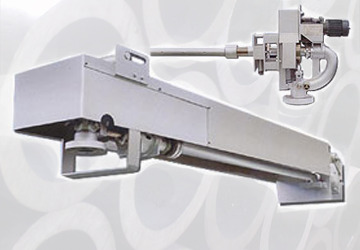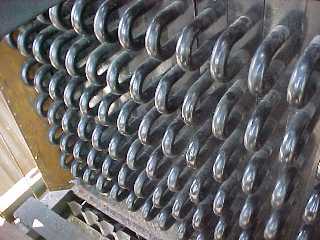
The Ultimate Guide to Sootblower Replacement Parts
Sootblowers are essential components of industrial boilers. Just like the name implies, they can remove soot and ash buildup from a boiler’s heat exchange surfaces.
Home » What is a Fluidized Bed Combustion Boiler?
Fluidized bed combustion technology offers innovative solutions for burning solid fuels. Fluidized bed combustion (FBC) boilers provide advanced methods of fuel consumption for standard boiler systems.
FBC boilers have many advantages over conventional firing systems and have emerged as a top choice for many clients in the biomass fuel industry. Are you wondering if a fluidized bed combustion boiler is right for you?
Keep reading to learn what a fluidized bed combustion boiler is and the benefits of adding this boiler type to your operations.
FBC boilers burn solid fuel materials to generate energy. Fuel particles are suspended within a chamber often, and particulates like sand are included in the fluidized bed. Jets blow air into the fluidity bed to support the combustion process.
FBC boilers efficiently mix gas and solids resulting in rapid heat transfer and chemical reactions within the fluidized bed. Fluidized bed combustion boilers have many advantages over traditional firing systems due to their compact design, which increases combustion efficiency and reduces emissions of pollutants.
Many FBC boilers have features that include:
FBC boiler types vary based on the size of the fuel-burning capacity and the necessary applications:
This type takes materials that are not as conducive for burning and transforms them into digestible materials using sand to aid the combustion process. Strong hardware systems are critical for BFBs due to the materials they process.
This is a general market choice for FBC boilers. AFB systems burn the smallest width of coal and other raw materials. Air is pressurized according to the required fuel output, and the temperature of air exiting the exhaust openings can be adjusted as needed.
For systems that utilize various fuel sources, a CFBC system can internalize several materials and convert them into high-quality fuel. The capacity to ingest more significant amounts of materials requires a boiler with a larger surface area.
This system is a large-scale version of its predecessors. PFB systems use turbines to distribute the converted fuel across a greater surface area. Like any major boiler system, the size supports higher production quantities of high-grade fuel. The increased combustion chamber size also allows for fuel particles to cycle through in repeat stages to maximize use.
FBC boilers are retrofitted to existing boiler units. There are several components that need to be sourced for a successful installation. Space and design are key components to outfitting an external boiler unit, as well as matching proper steam circulation attachments. A knowledgeable FBC boiler manufacturer can design and install the components to support any future modifications that may be needed. This flexibility optimizes the late stages of fuel conversion.
FBC boilers convert low-grade biomass fuel materials into high-quality, workable materials that can power boilers and other essential plant systems. Fuel material types include sand, coal, dirt, glass, and other naturally-occurring waste that need to be burned.
There are several benefits of using FBC boiler systems in industrial settings, like decreased boiler size, reduced emissions, and higher output. In addition, the recirculation of select fuel types makes the FBC boiler an environmentally-friendly and cost-effective choice.
Industrial Boilers America is an industry leader in industrial boiler manufacturing. Contact our team to learn how our FBC boilers can improve your plant’s emissions and efficiencies.
At Industrial Boilers America, we lead in providing the development, licensing, and deployment of Industrial Power plants. We partner with other leaders of communities and governments to foster long-term relationships that create sustainable energy, jobs, and social responsibility. Our philosophy that sustainability should be rooted in the betterment of the ecosystem rather than profit allows us to provide services that will enable our partners to reinvest in themselves, resulting in a sustainable community.

Sootblowers are essential components of industrial boilers. Just like the name implies, they can remove soot and ash buildup from a boiler’s heat exchange surfaces.

Boilers provide essential heating and steam generation for industries ranging from power production to manufacturing. To ensure safety, efficiency, and functionality, rely heavily on sophisticated

Industrial boilers are essential for keeping the world moving. Understanding the critical industrial boiler parts ensures efficient operation, safety, and longevity of equipment. Main Industrial